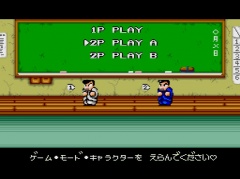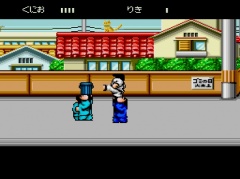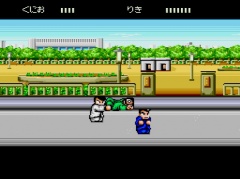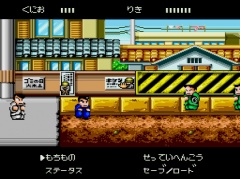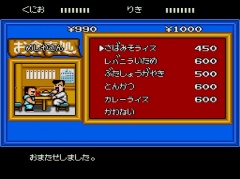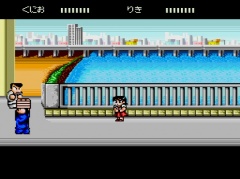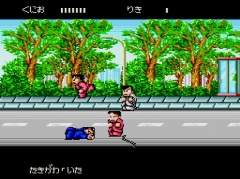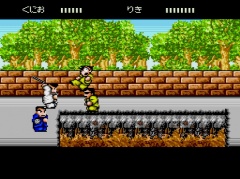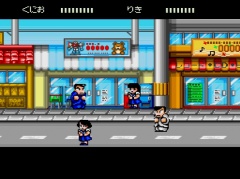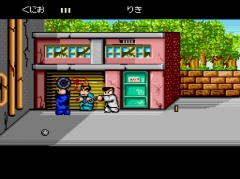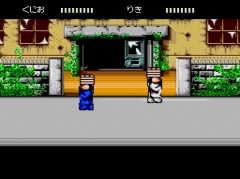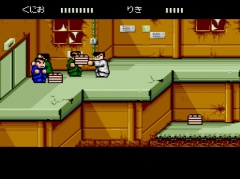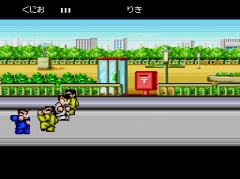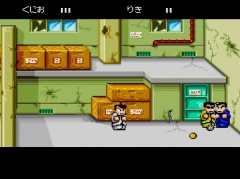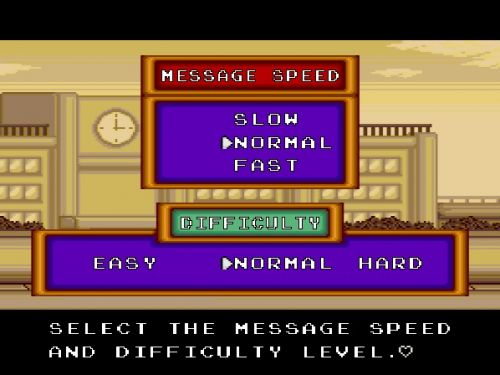
Downtown’s gameplay remains unchanged from the NES game many of us grew up with. One button punches, the other kicks, and pressing both at once makes you jump. Either button blocks enemy attacks as well. Characters are throwable. Players and enemies may wield a variety of weapons; I prefer the chain for its reach. While Downtown doesn’t have any true co-op moves, Riki and Kunio can stand on each other’s heads (mostly for fun).
Defeated enemies drop money (yen here instead of dollars), which you’ll use to buy health and stat-increasing items from the game’s many shops. This proves one of the game’s downsides for English speakers since the shop selections and stats appear in Japanese text instead of English. You can get by just buying stuff and seeing if it refills your health, or use an FAQ to figure out what everything does.
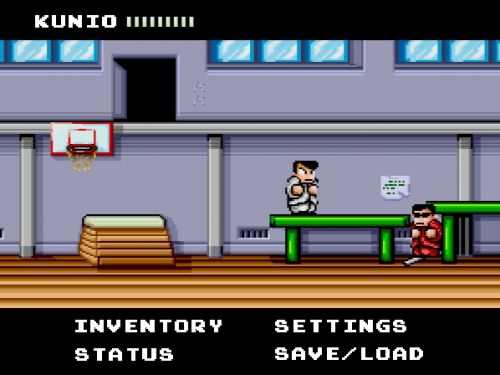
One final improvement over the NES version: Downtown supports saving instead of a password system. Unlike the GBA game, it saves your stats, location, and even enemy locations – a complete save state. Of course, most players these days will experience the game through an emulator with built-in save state support, but it’s still a great feature regardless.
There are essentially three distinct versions (four if we count X68000) of River City Ransom to choose from: the NES original, the PC Engine Super CD version, and River City Ransom EX on GameBoy Advance. With its expanded move set and even-more-enhanced graphics, many would consider the GBA game the one to play. But that version lacks the all-important feature of cooperative multiplayer! This game has always been a co-op classic. If you want the best possible 2-player River City Ransom experience, Downtown Nekketsu Monogatari takes the cake.
Come back next month when we'll look at the Japanese-only River City Ransom sequels!
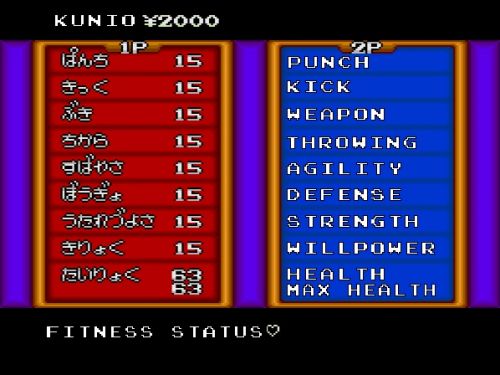
Language barrier: Low-Medium. Story dialogue is completely in Japanese, as are all the menus. As mentioned before, an NES version FAQ will fill you in on the story and shopping menus if necessary. The pause menu and stat screens are also in Japanese, so I've included some translated screenshots on this page.
Difficulty to import: The original CD-ROM will play in any Turbo Duo or Turbografx CD system equipped with a Super System Card Version 3.0. The emulation route is a bit harder here due to the game’s large file size (250 MEGs), but it’s worth the effort.
Playing on emulators like Ootake even reduces the loading times you’d have to stoically endure on a real Turbo Duo. Check out this guide for full instructions. Also note that Ootake requires the Japanese Super System Card 3.0 BIOS file in order to run this game (as opposed to the US version). PC Engine/Turbo Duo CDs are not region-locked, so it looks like a mild emulation issue.
